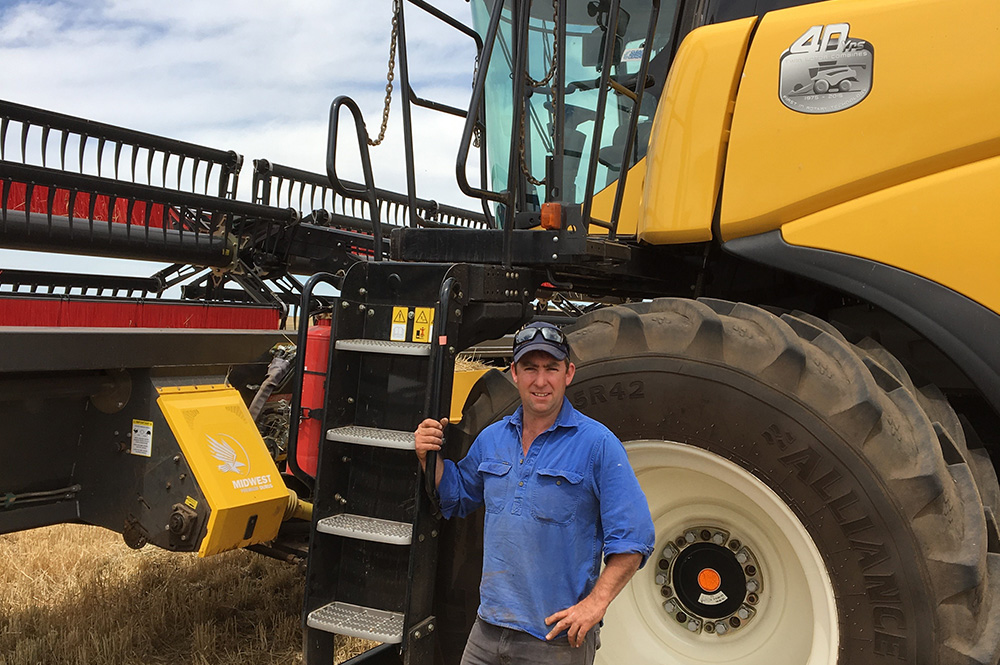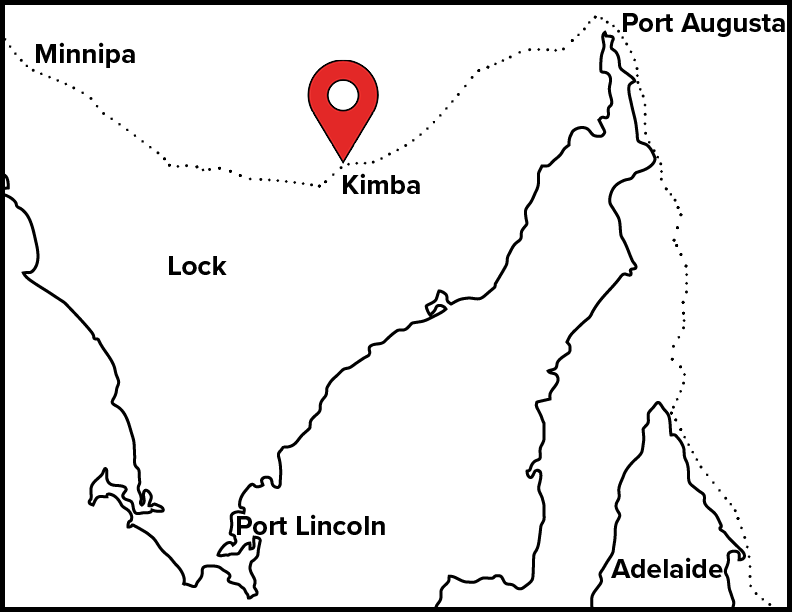Range of forecasting tools useful for variability


- Owners: Jeff, Jenny, Andrew, Dale, Mark and Libby Baldock
- Location: Kimba, South Australia
- Farm Size: 7000 hectares
- Livestock: 2700 breeding ewes
- Enterprises: cropping and sheep
- Average Annual Rainfall: 330 mm
- Soil Types: red clay, loam and sand
- Typical Crops Grown: wheat, barley, oats, canola, lupins, peas, vetch and medic pasture
Andrew Baldock knows the canola at his family’s property needs to be in the ground before the opening season rains and he uses seasonal forecasting to help guide their dry sowing decisions.
'Where we are, if we don’t have a pretty good profile of moisture, we will need good opening rains to sow canola as it just needs that early vigour to get well established,' he said.
'If canola isn’t in by the middle of May, then it’s not going in. It’s a decision based on the seasonal outlook, stored soil moisture, paddock history and gut feel.'
In the past, the Baldocks have held off seeding until the end of April knowing yields won’t suffer, but Andrew acknowledges if rain comes too late into May or even June and they haven’t started seeding there’s going to be quality issues.
'That might be when we would make the call to sow wheat dry, get it in the ground and manage weeds in our rotation instead of waiting for rain and a first knockdown,' he said.
'In terms of fertiliser, both short-term and seasonal forecasts give us greater confidence on application timing.'
The Baldocks are fourth-generation farmers at Kimba where they run a mixed farming operation of 2700 breeding ewes and crop around 5500ha. They manage a rotation of wheat, barley, oats, canola, lupins, peas, vetch and medic pasture. Andrew farms with his father Jeff, brother Mark and brother in law Nathan.
Andrew manages the cropping and grain marketing side of the operation and consults forecasts out to seven days to guide day-to-day work around factors such as wind and rain for opportunity to spread fertiliser or spray. Seasonal forecasts such as Agriculture Victoria’s The Fast Break and the quarterly Bureau of Meteorology forecasts can guide planting timing and the crop rotation mix, as well as urea applications heading into spring and harvest.
'It really is worth looking at a range of seasonal forecasters to allow for variability,' Andrew said.
'If you start seeing patterns where a lot of forecasters are predicting the same outcome you feel like you have more of a chance of that scenario occurring.'
Andrew also believes experience play an important part in making decisions on what a forecast is predicting and the likelihood of what will happen.
'I’m a fairly young farmer really and haven’t had a great deal of experience, so I’m taking notice of the forecasts and how they affect us. I’m also considering how different moisture levels in the soil affect us over time,' he said.
'This should help us to make better decisions going forward. We also like to look at the historical accuracy of the forecasts on the Bureau of Meteorology website to guide us and give us confidence.
'If we’re getting a 50 per cent chance of higher than average rainfall with only 50 per cent historical accuracy, it’s pretty hard to make much of that, but if you’re getting 70 per cent chance of higher or lower rainfall with 60–70 per cent historical accuracy you feel it’s more likely to happen.'
As knowledge of the property’s specific soil water holding capacity and the industry’s knowledge of water requirements of crops throughout the years improves, Andrew said the family was gaining confidence in consulting seasonal forecasts for in-season guidance.
In season 2019, the Baldocks are observing wheat at 2–4 leaf stages and barley starting to tiller in mid-June. Andrew said the barley will require much more rain in the coming months than the wheat will to succeed and this will be in the back of his mind while making operational decisions.
'The nitrogen application side of farming and having the confidence to apply it in-season is a huge decision for everyone and we know from research this contributes significantly to the yield gap,' he said.
'The ability to be more efficient with our nitrogen application through timing and confidence would be made easier with more reliable forecasting. Sometimes you just can’t get the confidence to apply nitrogen and we’ve hesitated in the past despite a good long-term forecast and it has proved quite costly.
'You’re balancing the scenarios of whether that large rainfall event could happen and potentially cause leaching or whether caution is the right move and the rain doesn’t happen.'